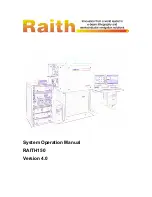
Additional Installation Tips
7.8.3
Restrictions and Recommendations
•
This product supports a maximum bit rate of 500 kBit/s. At this bit rate,
the cable length is limited to 50 m.
•
The maximum supported bit rate depends on bus load, bus topology, number
of nodes, bus termination, propagation delay of each CAN node and the bus
length.
•
Do not connect more than 32 nodes to one CAN network without using a
repeater.
•
If the bus length exceeds about 200 m, it is recommended to use CAN nodes
with built-in galvanic isolation.
•
If the bus length exceeds 1000 m, a CAN bus repeater should be used.
•
For additional information refer to the driver documentation for Free CAN
and Can Open in the iX Developer software.
7.9 USB Memory stick
The USB port is of 2.0 standard. Even though USB 3.0 may work well, we
recommend to use USB memory sticks dedicated for USB 2.0.
7.10 Image Sticking
When utilizing TFT LCD HMI panels in applications where a fixed or partially
fixed image remains displayed on the screen for extended periods of time,
users may experience a phenomenon referred to by the LCD industry as Image
Sticking. Image sticking, sometimes also called “image retention” or “ghosting, is a
phenomenon where a faint outline of a previously displayed image remains visible
on the screen when the image is changed.
Image sticking can be caused by:
•
Static images
•
No screensaver
•
Sharp contrast transition (e.g. black/white)
•
High ambient temperatures
How Image sticking can be avoided or reduced:
•
Use the screensaver functionality (see SW manual).
•
Changing constantly between static and dynamic images.
•
Avoid excessive brightness differences between foreground and background
elements.
•
Use colors with similar brightness.
•
Use complementary colors in follow-up images.
Beijer Electronics, MAEN228
31


































